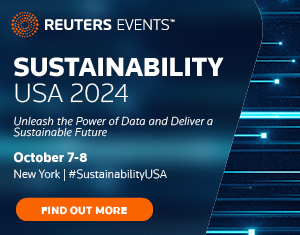SEJournal Online is the digital news magazine of the Society of Environmental Journalists. Learn more about SEJournal Online, including submission, subscription and advertising information.
 |
 |
| Above, Washington’s Ross Lake Dam, whose operator is seeking to relicense after its current license expires in 2025. Photo: U.S. Department of Energy, Pablo McLoud. |
TipSheet: Spurt in Hydro Relicensing To Leave U.S. Awash in Environmental Stories
By Joseph A. Davis
If you are an environmental journalist, odds are good that one of the roughly 2,200 hydroelectric dams in the United States is near you. That makes hydro relicensing a key local and regional story, dealing with complex issues that involve climate, environmental safety, fisheries, natural resources and even electric bills.
Some 400 hydropower licenses
on nonfederal dams in the
United States will expire by 2033.
Take note: Some 400 hydropower licenses on nonfederal dams in the United States will expire by 2033. That’s a big jump above the rate of about 80 in the last 10 years.
Hydroelectric dams, other than those federally owned, must be licensed by the Federal Energy Regulatory Commission before they can be built. FERC’s authority under the Federal Power Act (along with its amendments) allows it to license hydro plants initially for a period of 30-50 years.
After that, they must be relicensed, a significant government action that can take two to five years (typically at least three).
These dams could be anywhere, in any state, but most are in New England, the Upper Midwest, California and the Pacific Northwest.
Is one near you?
Why it matters
Dams, especially hydro dams, have huge and complex environmental consequences.
On the plus side, since their energy is based on falling water, they do generate large amounts of electric power without carbon emissions that could affect climate. They are a true “renewable” energy source.
At the same time, dams have a number of negative environmental impacts.
Most notably, they often block anadromous fish trying to swim upstream to spawn. In addition, the reservoirs that dams create fill up with sediment and eventually release carbon from decaying organic matter. Plus, canoe adventurers often say they ruin all the fun.
Not every dam produces hydropower; in fact, most don’t. Typical dams may have multiple purposes: drinking water, irrigation, hydro, storage for drought, flood prevention, recreation or even shipping (via associated locks).
The backstory
The history of dams and environmentalism goes way back. One of the seminal moments in the early U.S. environmental movement was in 1908, in the fight over the Hetch Hetchy Valley, which is really part of Yosemite in California.
John Muir led the fight against damming the Tuolumne River and destroying its beautiful valley in order to supply San Francisco with drinking water. In the process, he brought the Sierra Club into being. But they lost.
The decades have seen
quite a few major battles between
environmentalists and dam-builders.
The decades since have seen quite a few major battles between environmentalists and dam-builders, battles that continued to grow the environmental movement. Notable among them were Echo Dam and Glen Canyon Dam on the Colorado River in the 1950s. Enviros stopped Echo Dam, but not Glen Canyon.
Story ideas
- Is there a big or small hydro dam in your area? Is it operating? What customers does the power go to? What other purposes does it serve?
- How old are the hydro dams in your area? How safe are they? Are they “high-hazard” (meaning failure could kill people)? What condition are they in? When were they last inspected — and what were the findings? Can you get a copy of the inspection report?
- What dams in your area will be due for FERC relicensing in the next decade? What information about them is on file with FERC?
- What dams in your area may be candidates for removal? Who is pushing removal? Why?
- Are there any existing hydro dams in your area that are no longer producing hydropower? Do they have any other purposes? What would happen if they were removed?
- Have any hydro dams in your area already started the relicensing process? Get the filings. Go to the meetings. Interview the players.
- Is anyone proposing to “repower” inactive hydro dams in your area? What is the licensing scenario?
Reporting resources
- The Federal Energy Regulatory Commission: FERC, which relicenses hydro dams, has a lot of information about the licensing and relicensing process.
- Army Corps of Engineers: The Corps builds and owns dams, some of which generate electricity. It has 75 hydro dams and is the largest U.S. producer of renewable energy. See also its National Inventory of Dams database.
- Bureau of Reclamation: This agency built many of the major dams in the U.S. arid West. It owns 77 hydro projects.
- American Rivers: This nonprofit, nongovernmental membership group advocates for the health of rivers. It is actively working for removal of some existing dams.
- Power Marketing Administrations: These regional agencies operate some federal hydro dams and market the power they produce. Also, see the Tennessee Valley Authority.
Joseph A. Davis is a freelance writer/editor in Washington, D.C. who has been writing about the environment since 1976. He writes SEJournal Online's TipSheet, Reporter's Toolbox and Issue Backgrounder, and curates SEJ's weekday news headlines service EJToday and @EJTodayNews. Davis also directs SEJ's Freedom of Information Project and writes the WatchDog opinion column.
* From the weekly news magazine SEJournal Online, Vol. 9, No. 18. Content from each new issue of SEJournal Online is available to the public via the SEJournal Online main page. Subscribe to the e-newsletter here. And see past issues of the SEJournal archived here.











 Advertisement
Advertisement 



